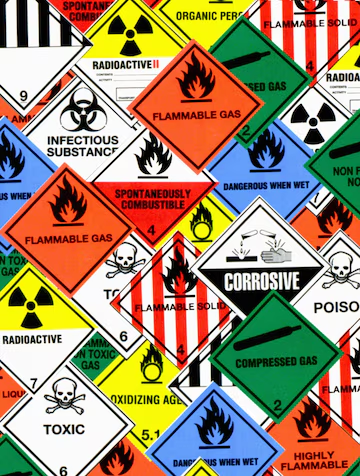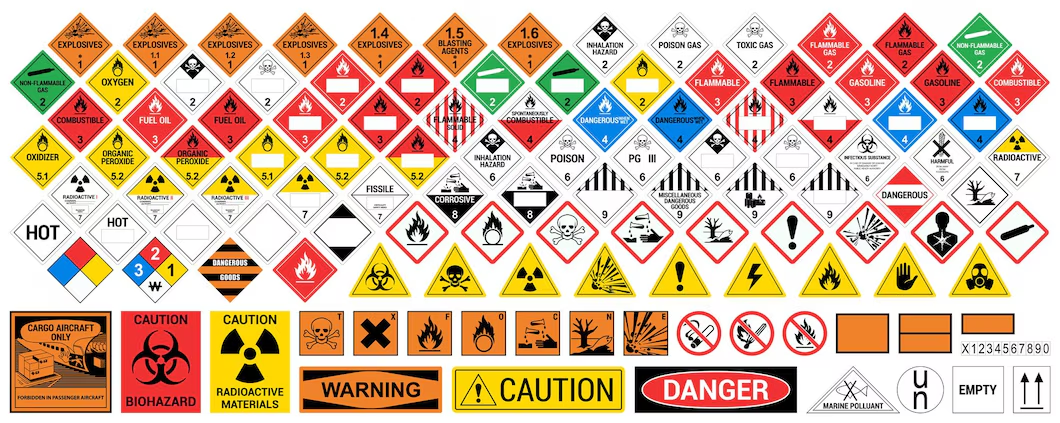Overview
At Time Global Shipping, we specialize in delivering comprehensive and secure freight and handling solutions for dangerous goods, underpinned by an unwavering commitment to safety, compliance, and expertise. Our services are meticulously designed to meet the unique requirements of industries handling hazardous materials.
Our Expert Services Include:
- Expert Dangerous Goods Transportation: Our team of hazardous materials specialists ensures the safe and compliant transportation of dangerous goods across air, sea, road, and rail modes, managing every aspect from classification to packaging, labeling, and documentation.
- Customized Packaging and Labeling: We provide specialized packaging solutions that protect dangerous goods during transit, adhering to international regulations and ensuring secure containment and easy identification.
- Regulatory Compliance Management: Our expertise navigates the complex landscape of dangerous goods regulations, ensuring compliance with international and local standards, including IATA, IMDG, ADR, and more.
- Comprehensive Documentation: We prepare accurate and complete documentation, reducing the risk of delays and regulatory issues.
- Industry-specific Solutions: Our tailored solutions cater to diverse industries, including chemicals, pharmaceuticals, manufacturing, energy, and more.
- Environmental Responsibility: We prioritize eco-friendly practices, minimizing the environmental impact of dangerous goods transportation and ensuring responsible handling and disposal.
Safety is our top priority. Our Dangerous Goods Freight and Handling services protect lives, preserve the environment, and address the unique logistical challenges of transporting hazardous materials. Partner with us for reliable, compliant, and secure solutions that meet your dangerous goods transportation needs.

Some FAQ
Dangerous Goods (DG) are substances or items that pose a risk to health, safety, property, or the environment due to their chemical, physical, or biological properties. These goods can be flammable, explosive, toxic, corrosive, or radioactive, among other hazards. DGs are subject to strict regulations during transportation to ensure they are handled, packaged, and shipped safely.
The transportation of Dangerous Goods is regulated by international and national laws to ensure safety. Some key regulations include: • ADR (European Agreement concerning the International Carriage of Dangerous Goods by Road) for road transport. • IMDG Code (International Maritime Dangerous Goods Code) for sea transport. • ICAO-TI (International Civil Aviation Organization Technical Instructions) for air transport. These regulations define the classifications, packaging requirements, labeling, and documentation needed to safely transport DGs.
Dangerous Goods are classified into nine main categories based on the type of risk they pose. These classes include: 1. Explosives 2. Gases 3. Flammable Liquids 4. Flammable Solids 5. Oxidizers and Organic Peroxides 6. Toxins and Infectious Substances 7. Radioactive Materials 8. Corrosives 9. Miscellaneous Dangerous Goods Each class has specific handling and transportation requirements to minimize the risks associated with that category.
If Dangerous Goods are incorrectly labeled or packaged, they must be corrected immediately to avoid potential hazards. Incorrect labeling or packaging can lead to accidents, delays, or legal penalties. The goods should be inspected and repackaged according to the regulations, with all necessary labels and documentation provided. It’s important to work with certified professionals, such as Dangerous Goods safety advisers or logistics providers, to ensure compliance with all regulations before the shipment proceeds.
